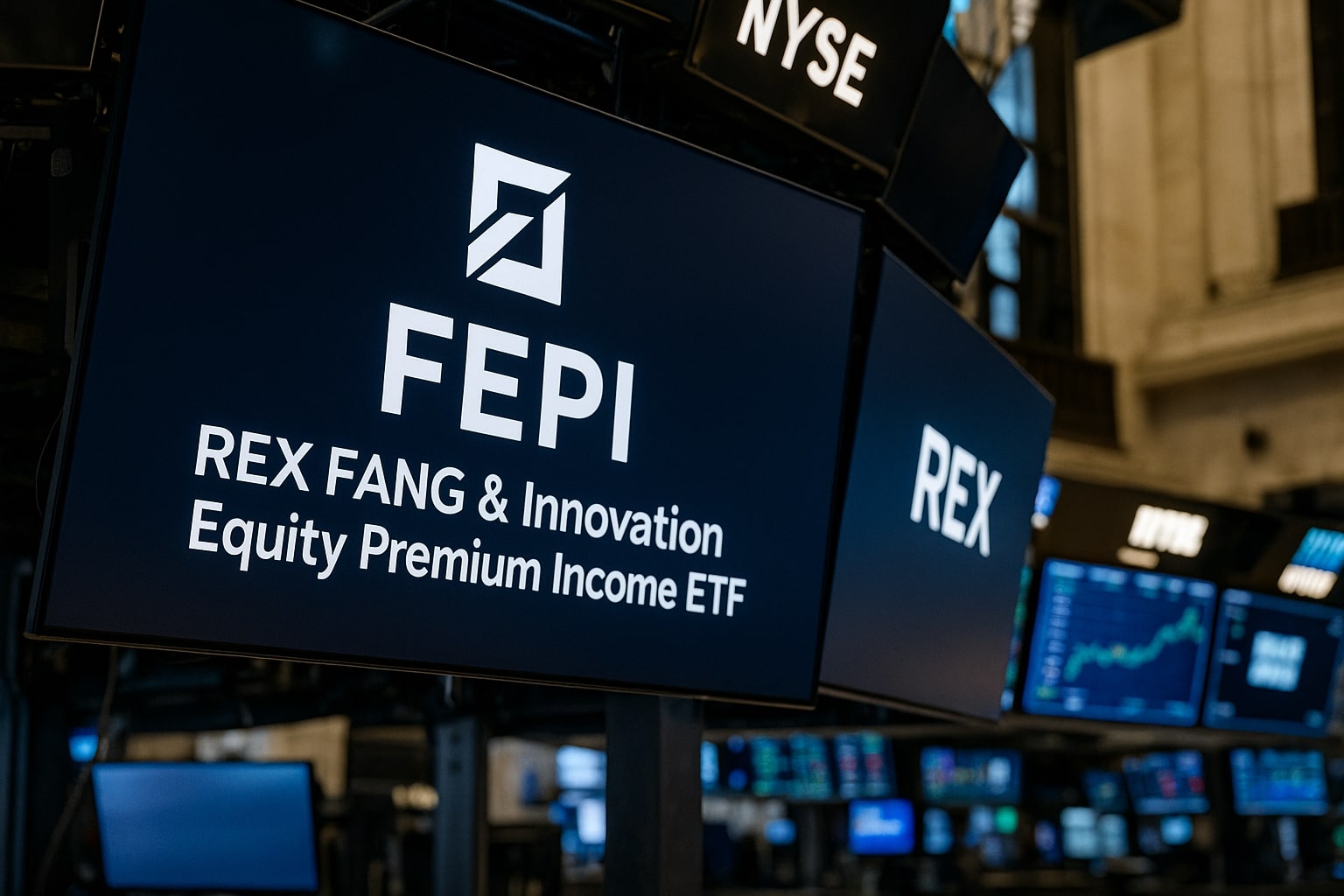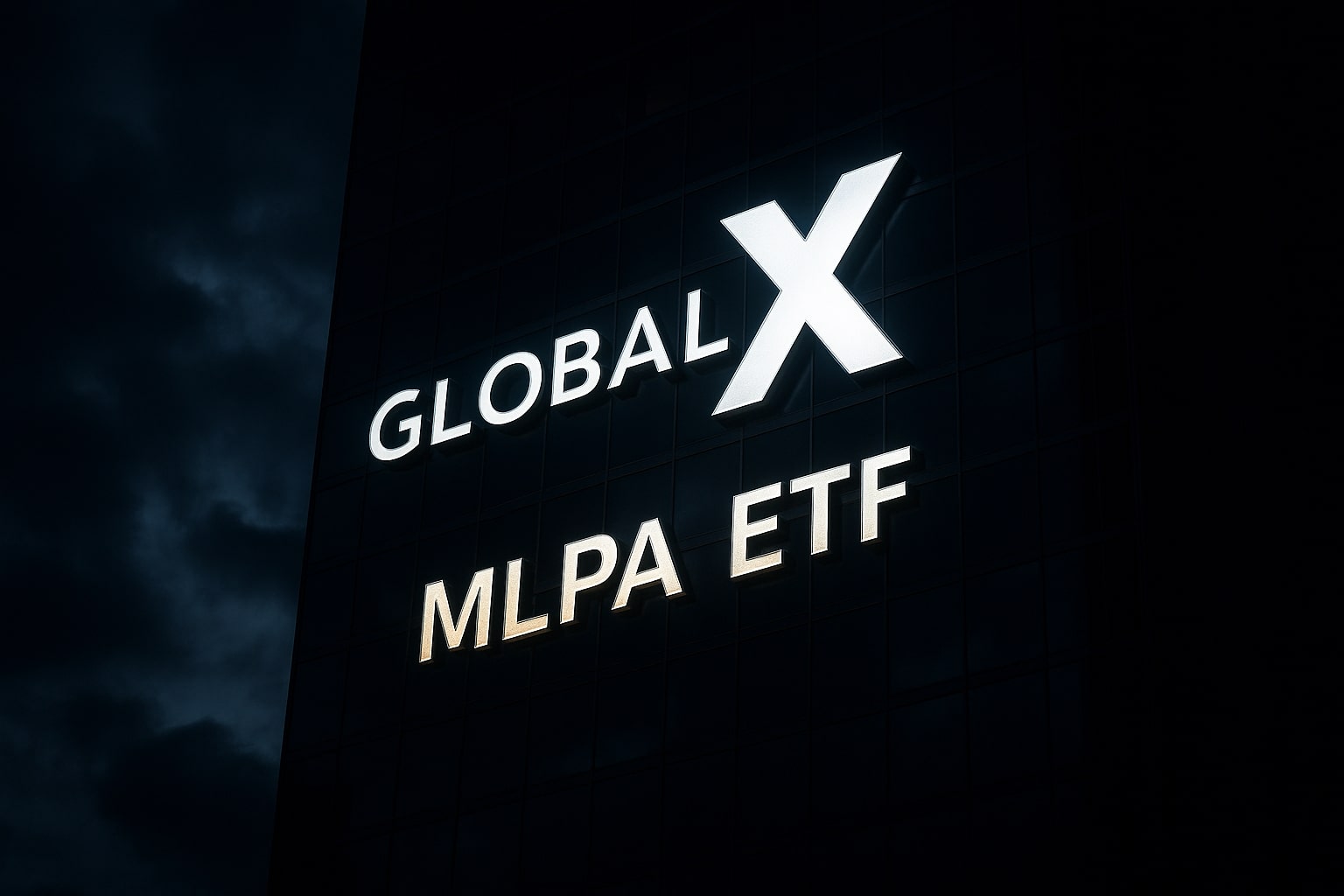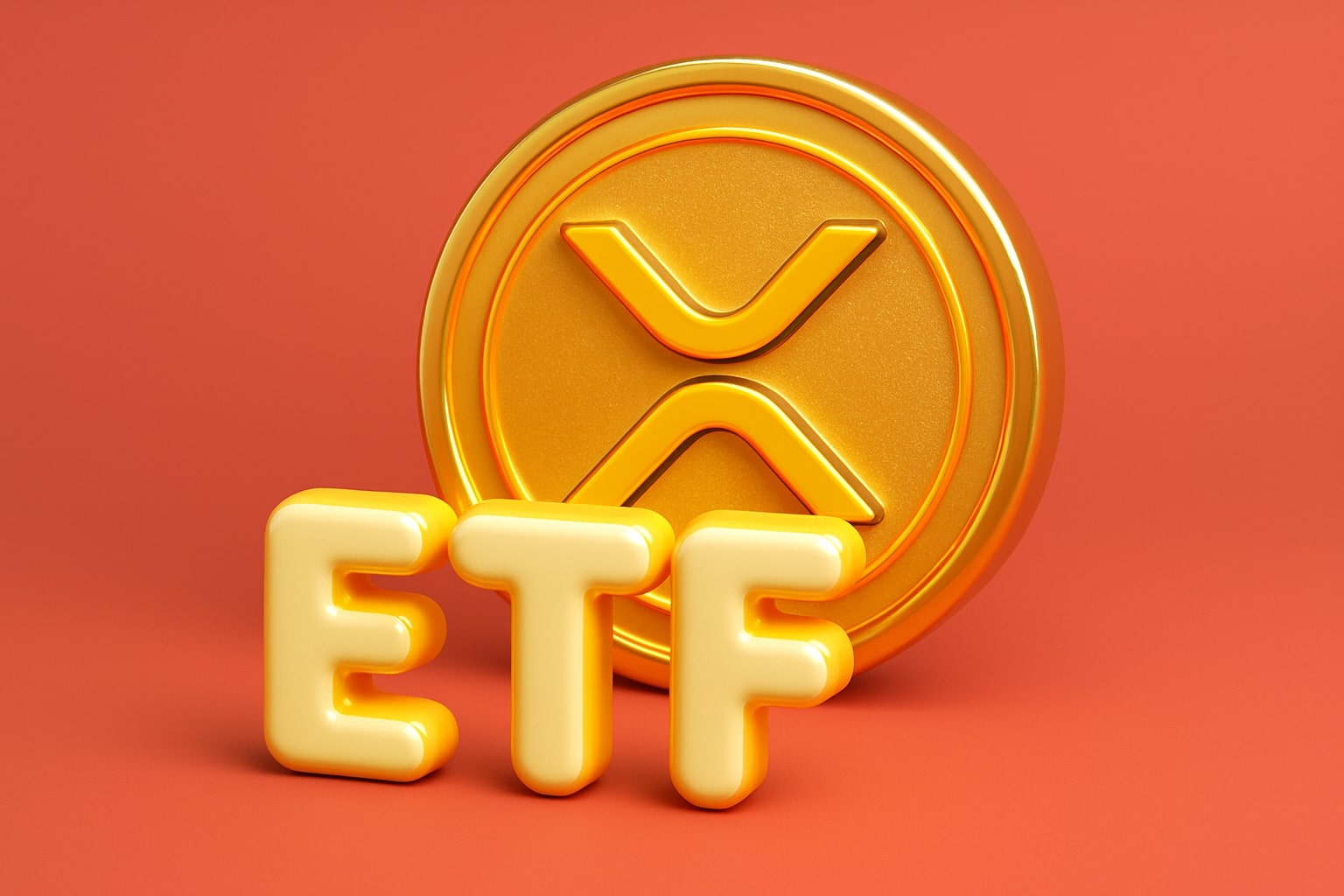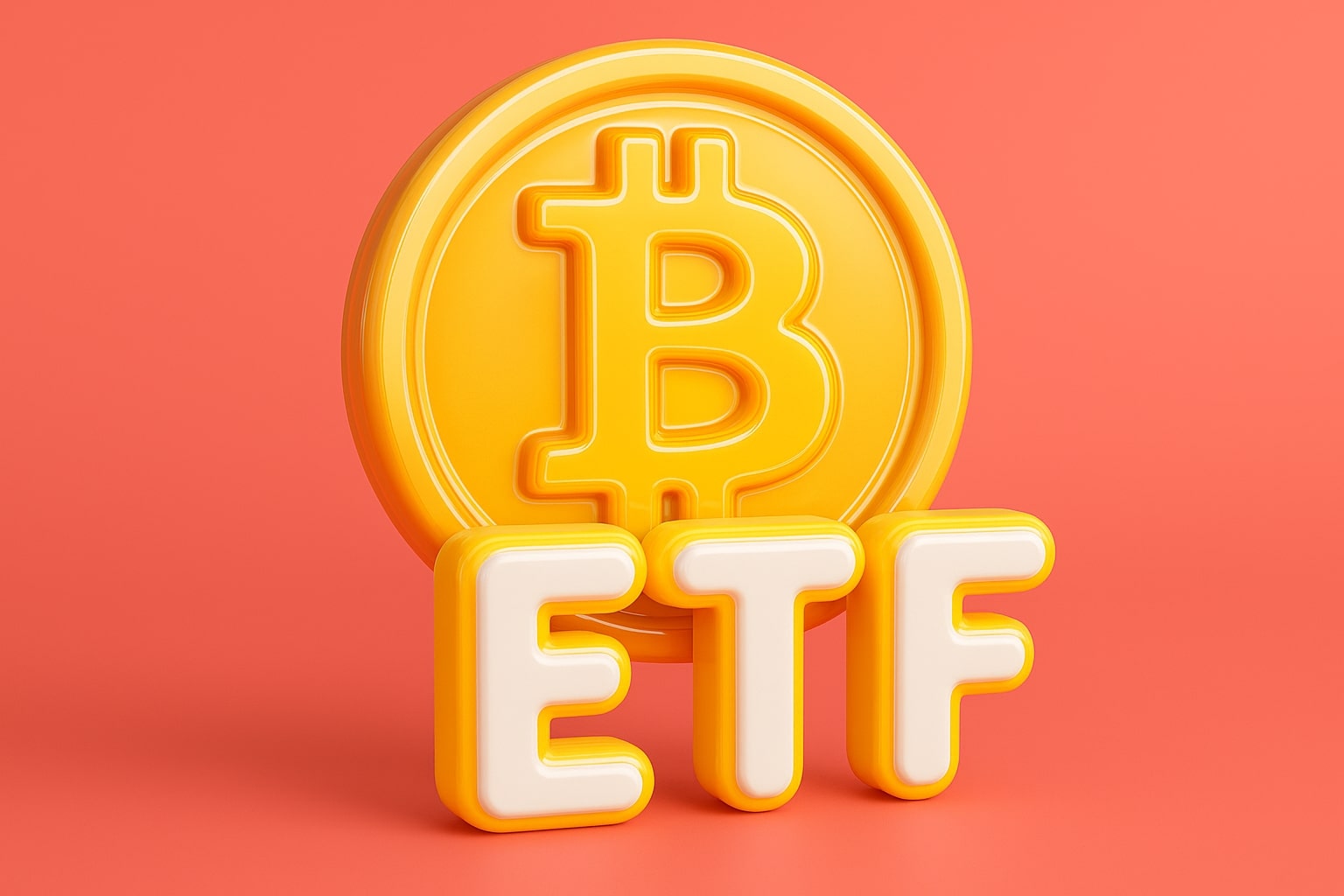
FEPI ETF (NYSEARCA:FEPI) Surges 15% YTD, Delivers 25.27% Yield as Tech Option Premiums Power $47.49 Price
Trading near $47.49, FEPI’s hybrid covered-call model on top holdings like NVIDIA, Apple, and Tesla drives $11.88 per share annual payouts. With $546M in assets and stable NAV, the ETF outpaces peers while capitalizing on tech volatility | That's TradingNEWS
NYSEARCA:FEPI — A 25% Yielding Tech-Income Machine Balancing Growth Exposure with Option Premium Power
The REX FANG & Innovation Equity Premium Income ETF (NYSEARCA:FEPI) has become one of the most remarkable performers in the high-yield ETF landscape, standing out with a staggering 25.27% annual yield and monthly dividend frequency that few income vehicles can match. With net assets of $546 million, an expense ratio of 0.65%, and a 2025 total return of over 20%, FEPI represents a calculated convergence of technology exposure and covered call efficiency. Trading near $47.03 at the October 3 close and rebounding to $47.49 after hours, FEPI maintains price stability while distributing nearly $11.88 per share annually, a rare feat among premium income strategies that typically erode NAV.
Strategic Positioning: Concentrated Exposure to Volatile Tech Giants
FEPI’s strategy thrives on volatility — and that’s by design. The ETF holds 15 core positions, strategically weighted toward large-cap innovators such as Intel (8.98%), AppLovin (7.84%), Apple (6.98%), Tesla (6.93%), Palantir (6.89%), NVIDIA (6.81%), Micron (6.80%), AMD (6.60%), Microsoft (6.59%), and Netflix (6.58%). This focused allocation covers roughly 71% of total assets, with the remaining balance diversified across smaller holdings tied to the Solactive FANG Innovation Index. Technology dominates FEPI’s structure at 60.68%, followed by Communication Services at 26.49% and Consumer Cyclical at 12.83% — an intentional skew that leverages volatility from the most option-rich sector of the market.
Unlike passive index ETFs such as Invesco QQQ (NASDAQ:QQQ), FEPI doesn’t aim to mirror price performance. Instead, it capitalizes on out-of-the-money call options, typically written 5%–15% above current prices, which capture premium income from volatility without fully sacrificing growth participation. That balance explains why, despite tech’s fluctuations, FEPI’s YTD return of 15.34% still outpaces the Derivative Income category’s 9.65% average while maintaining monthly payouts above $0.95 per share.
Income Mechanics: 25% Yield With NAV Stability
FEPI’s consistent 25% yield is not an optical illusion — it’s a product of option discipline, premium rotation, and dividend resilience. The ETF’s monthly distributions, currently around $0.9752 per share, generate approximately $2,520 in annual income for every $10,000 invested. Over a four-year horizon, this structure theoretically allows investors to recover their initial capital through distributions alone — what analysts refer to as reaching “house money” status. Importantly, these payouts have remained stable since inception, recovering quickly from April’s tariff-induced dip, when FEPI briefly cut its dividend from $1.05 to $0.90 amid market turbulence.
Crucially, the majority of FEPI’s distributions — 100% year-to-date — are classified as return of capital, creating a tax-deferred income stream. This allows investors to reduce their cost basis instead of realizing immediate taxable income, with long-term capital gains treatment deferred until shares are sold. For income-focused investors in higher tax brackets, this tax efficiency significantly amplifies the ETF’s net yield advantage over peers such as YieldMax Magnificent 7 (YMAG) or Roundhill QDTE, which distribute largely as ordinary income.
Read More
-
MLPA ETF (NYSEARCA:MLPA) Holds $49.09 With 7.71% Yield And Rising Midstream Revenues Signal Further Upside
30.11.2025 · TradingNEWS ArchiveStocks
-
Ripple’s XRPI And XRPR ETFs Rise As XRP Hits $2.19 With $164 Million In ETF Inflows And 29% Supply Drop
30.11.2025 · TradingNEWS ArchiveCrypto
-
Natural Gas Price Forecast (NG=F) Breaks Higher Above $4.85 As Cold Weather and Record LNG Exports Drive a Bullish Winter Setup
30.11.2025 · TradingNEWS ArchiveCommodities
-
USD/JPY Price Forecast - Dollar to Yen (¥156.70) Surges Toward ¥160 as Japan’s Finance Chief Warns of Speculative Yen Moves
30.11.2025 · TradingNEWS ArchiveForex
Performance Review: Outperforming Peers With Lower Capital Erosion
FEPI’s appeal lies not only in its income yield but in its ability to sustain principal value. Since inception in October 2023, FEPI’s share price has dipped only 12.2%, far less than synthetic option ETFs like QDTE, which saw 26.2% erosion. Meanwhile, total return, including dividends, stands at nearly 40%, positioning FEPI ahead of comparable funds like YMAG and QDTE on a risk-adjusted basis. The fund’s YTD gain of 15.34% and 1-year total return of 20.12% reflect resilience through market volatility — particularly impressive given the April drawdown sparked by the Trump administration’s tariff proposals that temporarily disrupted the Nasdaq-100’s upward momentum.
The ETF’s ability to outperform during flat or moderately bullish periods comes from its disciplined use of covered calls. The strategy thrives when markets move sideways or incrementally higher — exactly the pattern seen in Q3 2025 as tech giants consolidated near record highs. By consistently collecting premiums, FEPI mitigates the drag of NAV erosion that typically plagues high-distribution products.
Comparison to Other Covered Call Strategies
Within the high-income ETF universe, FEPI occupies a middle ground between defensive income and aggressive yield chasing. For example, Goldman Sachs Nasdaq-100 Premium Income ETF (GPIQ) yields roughly 9.9%, far lower than FEPI’s 25%, but benefits from modest price appreciation. On the other extreme, YMAG’s 49.8% yield and QDTE’s 38.8% yield deliver more aggressive cash flow at the expense of deeper capital decay. FEPI’s real distinction lies in its hybrid structure — it holds physical shares while selling OTM options, rather than using synthetic swaps or derivatives, providing intrinsic equity exposure that buffers against NAV deterioration.
With a beta near zero and low correlation to broad equity indexes, FEPI also introduces diversification benefits within income portfolios. Investors who prioritize cash flow stability rather than growth find its risk-return tradeoff more sustainable than short-dated 0DTE products that depend on intraday volatility spikes.
Tax-Efficient Yield Advantage and “House Money” Status
FEPI’s structure has major implications for long-term investors. The return of capital classification on all distributions means taxes are deferred until liquidation, and capital gains rates — rather than ordinary income rates — apply at exit. Over a typical four-year holding period, cumulative payouts can exceed the original investment, effectively converting the ETF into a perpetual yield vehicle with negligible tax drag. This combination of yield intensity and tax deferral makes NYSEARCA:FEPI a standout among derivative-income ETFs, especially in a climate where Treasury yields near 4.3% offer limited after-tax real returns.
Market Conditions: Why FEPI’s Timing Works in 2025
FEPI’s strong performance this year reflects the macroeconomic backdrop of slowing growth, sticky inflation, and tempered rate-cut expectations. With U.S. equities, particularly the Nasdaq-100, trading near historic valuations, investors have turned to income-producing structures that monetize volatility rather than chase capital appreciation. FEPI fits this environment perfectly — its covered call overlay extracts consistent income from volatility spikes, while its holdings in mega-cap tech benefit from AI-driven tailwinds.
Companies like NVIDIA (NVDA) and Microsoft (MSFT), which account for over 13% of the fund, continue to report record AI-driven revenues, sustaining implied volatility levels ideal for option writers. Meanwhile, Intel’s (INTC) recovery in chip production and Tesla’s (TSLA) renewed momentum in energy storage add further premium potential. The result is a stable cash flow engine fueled by the same volatility that pressures traditional growth ETFs.
Risk Factors: Growth Limitation and Cyclical Exposure
The primary limitation of FEPI lies in its capped upside — the nature of covered calls means the ETF sacrifices sharp rallies beyond the strike prices of its written options. In booming bull markets, like early 2023 or mid-2024, FEPI will underperform growth-oriented peers such as QQQ or ARKK. Its reliance on volatility also exposes it to yield compression if tech stocks enter a prolonged calm phase. Moreover, despite a defensive call overlay, a severe market correction in large-cap tech could trigger NAV declines, albeit offset partially by collected premiums.
Still, the structure’s design inherently cushions against catastrophic loss, and the 25% yield provides a steady income floor that keeps investors compensated during downturns. FEPI’s portfolio concentration in AI and innovation-driven sectors does imply cyclicality, but it also ensures continuous liquidity for option writing — a core strength absent in many smaller covered call funds.
Outlook: Sustained 25% Yield with Moderate Growth Potential
Looking ahead, FEPI’s $47 price level appears technically stable, with NAV tracking around $46.99 and volume averaging 116,000 shares per day. Unless volatility collapses or technology valuations plunge, the fund’s 25% annualized yield remains sustainable, supported by high implied volatility across the semiconductor and software sectors. The combination of a 15% YTD return, resilient NAV, and rising investor appetite for income hedges positions FEPI as one of the most distinctive derivative-income ETFs in 2025.
Its ability to merge the innovation-driven upside of FANG and AI names with disciplined income generation sets it apart as a powerful portfolio stabilizer. With institutional assets now exceeding half a billion dollars, liquidity is ample, and distributions remain consistent. FEPI has evolved from a niche product into a benchmark for sustainable ultra-high income within equity markets.
Verdict: Buy (NYSEARCA:FEPI | 25.27% Yield | 15.34% YTD Gain | Balanced Income-Volatility Strategy)


















